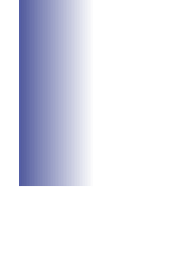Geoscience Reference
In-Depth Information
For any units or boundaries that are laterally variable or show
a number of different features, use a sketch along with the
graphic log to show the lateral variation or particular features
(e.g. Figures 6.8 and 4.3c). Worked Example 6.1 shows an
example of how the graphical logging technique was used to
record a sedimentary succession.
6
Figure 6.8
Sketch of an erosion
surface in the Carboniferous,
Northumberland showing the
large-scale topography on the
surface and details of the laterally
variable units above and below.
(Notebook of Angela L. Coe, The
Open University, UK.)
Worked Example 6.1 Construction of a graphic log of a shallow-water
carbonate succession
Figures 6.9 and 6.10 show photographs and the
fi eld and published version of a graphic log that
was compiled to summarize the features of the
Portland Beds at Freshwater Bay, Isle of
Portland, Dorset, UK. This work was completed
as part of a basin-wide study of the depositional
history and sequence stratigraphy of the Portland
Beds within the Wessex Basin, southern
England. The graphic log in Figure 6.10 is one of
a set that was constructed along a proximal to
distal basin profi le. Thin-sections were cut from
the samples taken and these were used to
confi rm and supplement fi eld observations. A
facies model for the main depocentre was also
constructed using many sections. Note that the
black chert nodules that have formed around
Thalassinoides
burrows are drawn roughly to
scale so that the beds can be easily recognized
(Figure 6.9). There are notes on the occurrence of
ooids; these change through the succession and
because of their shallow-water origin they are
signifi cant for the sequence stratigraphic
interpretation. The thin beds are drawn relatively
thickly in the notebook so that there is space for
the details.
All of the ammonite biostratigraphic information
was compiled from the literature. Particular note
was taken of stratigraphic gaps evident from both
the sedimentology and the biostratigraphy. The
facies and the stratigraphic gaps were used to
construct a sequence stratigraphic interpretation
(Section 6.5.1). The surface marked P2 (Figure
6.10) is a sequence boundary that corresponds to
an incised fl uvial valley cut into marine deposits
on the basin margins and is therefore interpreted
as a forced regression. Surface P3 is also a
sequence boundary associated with more minor
marine incision.









